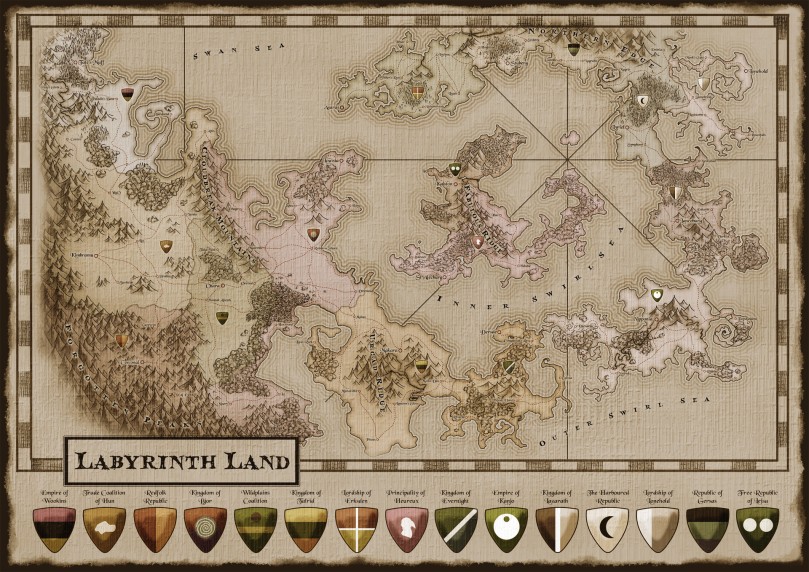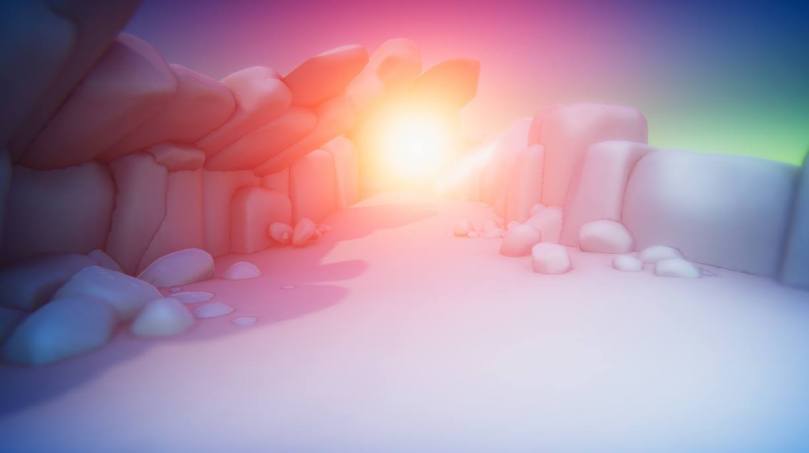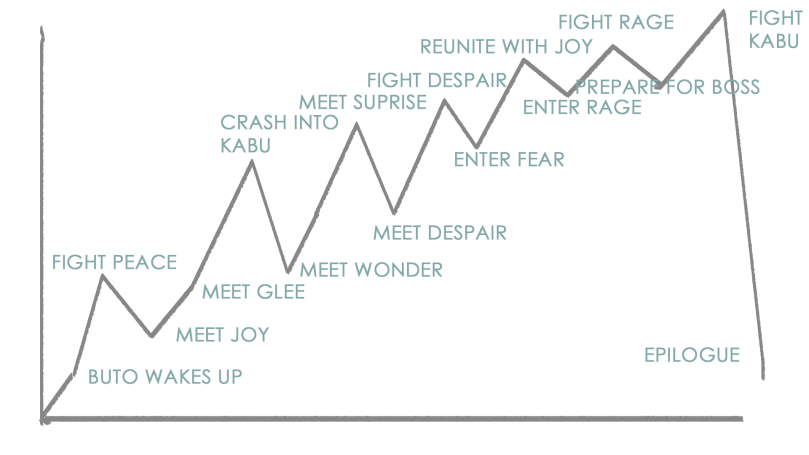A lot of the time it’s a good idea to come up with the mechanics of a game first and the worldbuilding second- after all, inventing mechanics has a tangible end point. Worldbuilding just goes on and on and on and before you know it you have a 100,000+ word document detailing the languages and currencies and intricate societal systems of your world with no game to show for it. I’d like to argue that it’s possible (and worthwhile) to do the opposite: create game mechanics born through the narrative design of a world. That’s something I’m attempting to do through my Quintalis tabletop roleplaying project. Full disclaimer: no one is paying me to finish that project and the only deadlines are any upcoming games I run to test new ideas and polish mechanics. In other words, I have all the time in the world to do this and that’s just about enough to get anywhere with this approach.
First comes the world.

At this point, there is no game. Ask, what is this world? What does this world mean? I wanted to create a blank canvas that I can expand on. Something inspired by the Final Fantasy worlds as a whole. Something inspired by books I grew up on, like the Edge Chronicles by Paul Stewart and Chris Riddell or Walter Moers’ collection of novels set in Zamonia. Moers himself said that in his first Zamonia novel, The 13½ Lives of Captain Bluebear the hero isn’t Captain Bluebear- it’s the world. That’s something that really resonates with me. Any one of my projects is often more about the world and what happens in it, how it works and how it’s alive, rather than the characters through whose eyes the player/reader sees the world. It’s about the themes the world explores. In the case of Quintalis, I think that might be bioconservative versus technoprogressive transhumanism but like, magic. It’s about the question of how far a person’s life can blend with technology (and magic) without losing its humanity. To be honest though, I have no idea and I’m still trying to figure out what’s at the core of that world.
Then comes some sort of game.
Quintalis is a tabletop game and not a video game, for good reason. In a tabletop game (especially a pen and paper one), rules can be changed and experimented with a lot more easily than in a video game that’s so much more complex to assemble. At the core it’s in the same kind of vein as D&D or Pathfinder. The game is run by a game master with some players who have their custom characters. Players do a thing, game master decides the outcome. The point is, making a game like that is a great candidate for this approach of worldbuilding first. The time it takes to prototype a mechanic here is a fraction of the time it would take to prototype them in a digital game, especially when you’re doing the project on your own. Now that you have a world, creating the game is as easy as transferring the themes and events of your world into actionable mechanics. That is to say, not very easy at all.
Noncommittal summaries aside, here’s an actual actionable example of what I’m trying to say. One of the overall themes of Quintalis is obviously transhumanism. The enhancement of one’s body and mind through the use of (in this case) some sort of magic/technology hybrid. Characters in Quintalis can become Espers through surgically inserting magical constructs into their bodies, which allows them to use a variety of abilities loosely based on classic sci-fi tropes like lasers and force fields and what not. So how do you reflect these things in your game mechanics? One way that I found is through the way the game treats player advancement. Instead of being awarded experience points, players absorb blessings given to them for doing cool stuff. They can then exchange those blessings for the right price at a teacher NPC who can gradually improve one of their four stats or bestow them with new abilities. Those improvements can come at a price though – every time there’s a blessings transaction, there’s a small chance (decided by dice roll) that the character loses some of their self. This could be a treasured memory, stat points or a complete loss of self (that last one only works for people who are super comfortable with roleplaying, for obvious reasons).
So there’s just one example of a mechanic created from a narrative. It piggybacks off the themes the world is built around, establishes a narrative rule of how things work in this world and channels that into a systematic rule that impacts the game is played, compared to other similar games in that kind of genre. This is just another way of creating mechanics and coming up with ideas, but it’s one I quite like as it absolutely ties the game and the world together in a way that deciding to go with a normal experience-level up system doesn’t quite achieve. The narrative is the game and the game is the narrative.


 Here’s a quick pacing graph of the major points in the story of Buto. To the trained eye, it might appear that the story is 1) overscoped and 2) generic. This is indeed correct and an issue that we are surely going to address in the coming months¹. But I digress. As an overall formula we’re using the peaks of the intensity to deal with encounters where Buto discovers that a character they met in the previous valley of the graph is indeed controlled by Kabu.
Here’s a quick pacing graph of the major points in the story of Buto. To the trained eye, it might appear that the story is 1) overscoped and 2) generic. This is indeed correct and an issue that we are surely going to address in the coming months¹. But I digress. As an overall formula we’re using the peaks of the intensity to deal with encounters where Buto discovers that a character they met in the previous valley of the graph is indeed controlled by Kabu.